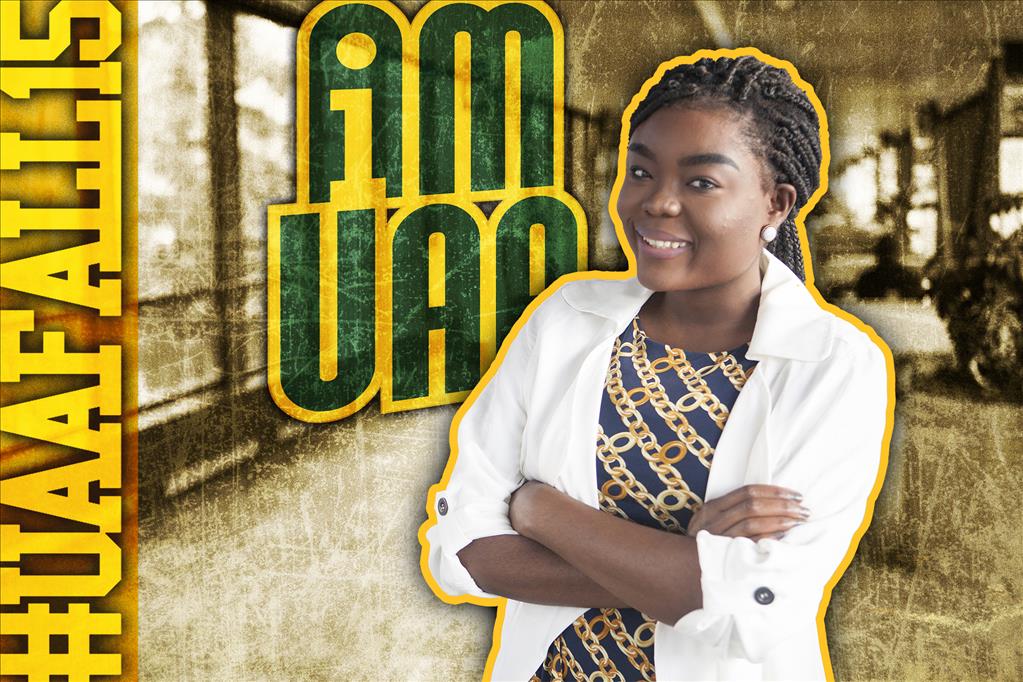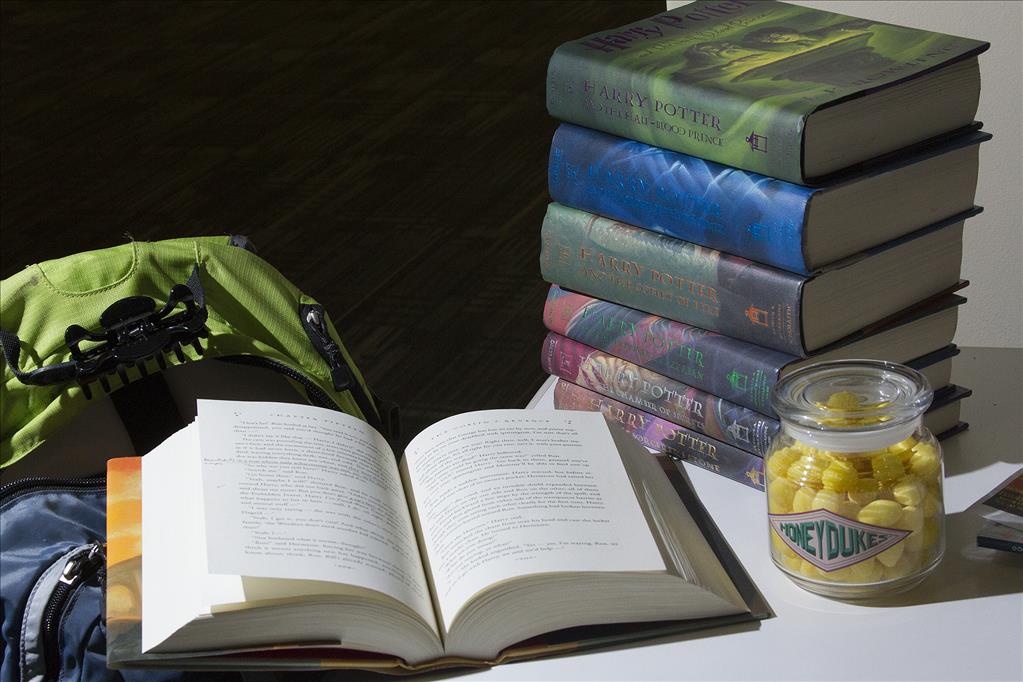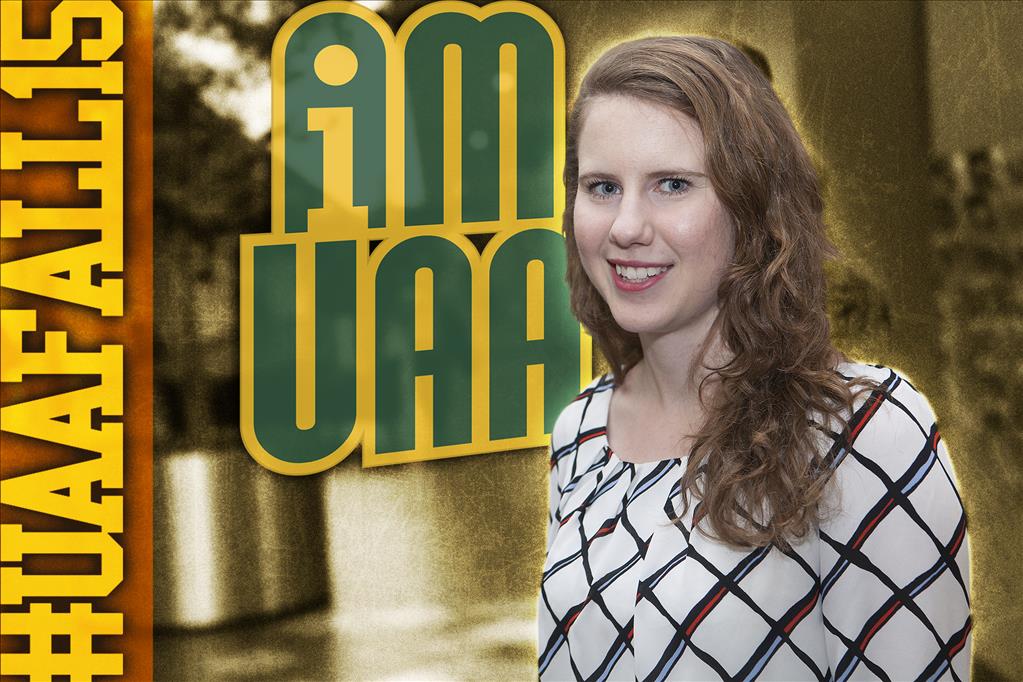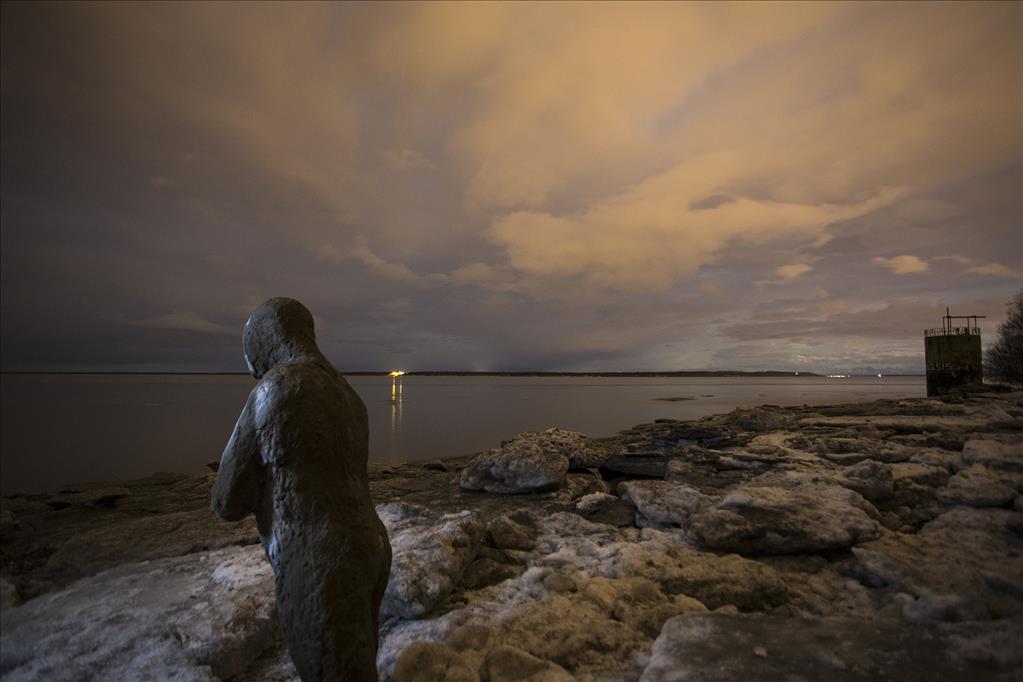A new idea for solving intersection ruts in Anchorage
by Kathleen McCoy |
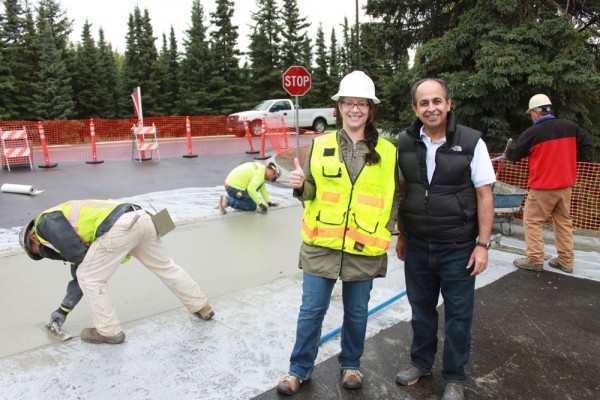
Anna Bosin, research engineer with the Alaska Department of Transportation, and Osama Abaza, a civil engineering professor specializing in pavement design and transportation safety. Behind them, a test slab is installed at UAA. (Photo provided by Osama Abaza/UAA)
When did you last rattle your teeth and spill your coffee while rolling through the intersection at Northern Lights and the New Seward Highway? Road ruts-they get us every time.
A local transportation safety expert has a fresh idea for how to solve this recurring Alaska problem. Osama Abaza has spent 30 years teaching traffic engineering and pavement design, and consulting with industry and government to improve safety. He's a professor of civil engineering at UAA, where he's taught graduates and undergraduates for the past nine years.
We don't need Abaza to tell us these intersections are rough on drivers. But he takes it a step further.
"As you cross the intersection, you encounter ruts going in both directions. This is an extreme safety hazard for drivers, especially at higher speeds. The car can shift sideways," and potentially out of control. He's been monitoring 25 intersections in Anchorage for some time, and what he's seen has motivated him to work specifically on improving intersections.
Now, Abaza and two graduate students, Zaid Hussein and Mahear Abou Eid, have developed a new recipe for the pavement at intersections. That's right, a new recipe.
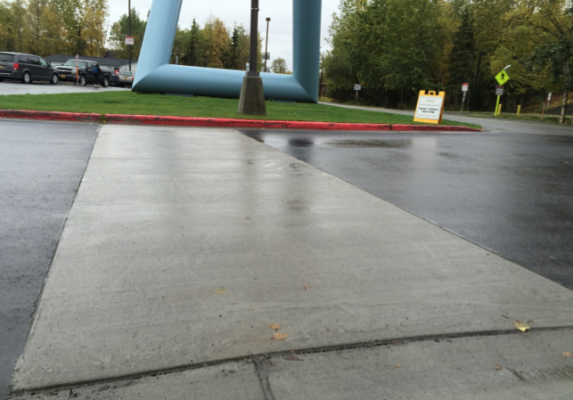
Test slab of steel fiber reinforced rubberized concrete, a mouthful for a new pavement recipe that will resist tire stud rutting. (Photo by Osama Abaza.UAA)
You might think a road is a road is a road. Turns out engineers, the government and industrial paving companies are always looking for new ingredients that ensure more durable roadways that won't yield so quickly to studded tire rutting and the freeze-thaw damage of an Alaska winter.
So what are they mixing up? It's a mouthful-steel-fiber reinforced rubberized concrete. To your standard issue Portland cement concrete, they have added crumbled rubber from recycled tires and steel fibers.
While Portland cement concrete is a great roadway surface, the Alaska climate's freeze-thaw cycles wreak havoc on it. Everyday traffic pounds the rigid surface and wide temperature fluctuations allow micro cracks to form in the concrete.
So, Abaza started tinkering with the recipe.
"Let us put rubber in it to make it a little bit more flexible for the expansion and contraction," he said. That worked well. Concrete has air pockets or air voids. Under the compression and expansion of freeze-thaw, an air void can compress and disappear. But rubber crumbles will compress and spring back, filling the void again.
The down side to rubber is that its added flexibility weakens the concrete. The antidote is adding back strength with steel fibers.
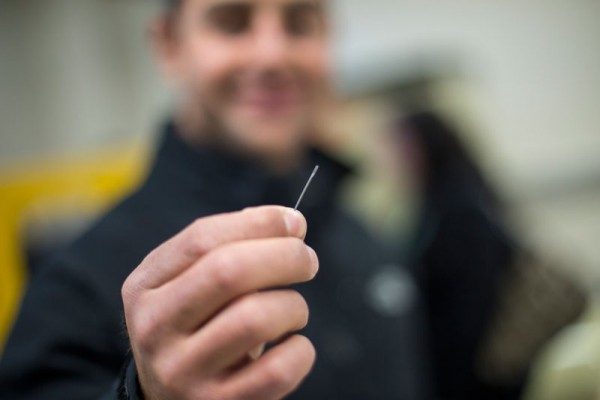
UAA graduate student Majear Aboueid holds a steel fiber, one of the unusual ingredients in a concrete mix designed to withstand rutting at intersections. (Photo by Ted Kincaid/UAA)
The steel fibers are serious business. They look almost exactly like sewing machine needles-about an inch and a half long, straight and sharp. The first time I saw them, all I could think was: flat tires.
Not so, says Abou Eid. The fibers are thin. As a crew finishes the concrete surface, all these small fibers are laid flat and concealed. But within the concrete, they add strength, just like old-fashioned rebar supports a masonry building.
"The steel fibers are spread all over," says Abaza. "Wherever a micro crack might begin, the steel fiber runs along that crack and keeps it from spreading."
It all comes down to a recipe-the right combination of rubber and steel fiber tossed into the concrete mix. While installation will be more expensive than standard concrete, these researchers say savings will come in the long haul. Today's roads are repaved about every five years. Abaza's recipe will be good for 20, he says.
Abaza has been testing the substance for four years in the lab. He's already cast 76 concrete "beams" and then tested them to see how much he can bend them before they break. He recently acquired a "wheel tracker" with a studded tire so he can run tens of thousands of repetitions over the surface.
But Abaza consults in the real world. He knows government and industry want to observe how new material behaves outside the lab. So he worked with the Alaska Department of Transportation to get a federal grant to lay a test strip of his new pavement recipe along Abbott Road next summer.
That still wasn't enough. Abaza also needed to find a local industry partner to mix his recipe. After all, steel fibers aren't a typical roadway ingredient.

UAA graduate student Mahear Abou Eid, standing, works on the concrete recipe with materials technician Timothy Burlingham from the Alaska Department of Transportation. (Photo by Osama Abaza)
Here's where grad student Abou Eid, who also works full time for the AK DOT, proved his mettle. He negotiated with Alaska Sand & Gravel to whip up a test batch just to prove it could be done. He and Abaza also arranged with UAA to lay a test slab in a parking lot near the campus library over Labor Day weekend so it could live through a full Alaska winter.
"The UAA slab is simply a prototype to prove we can do the Abbott Road project next summer," Abaza said, sounding like the patient man that he is. After all, he's been at this roadwork for three decades. And good news came last week. The AK DOT confirmed in writing their approval for his trial project on Abbott Road next summer. Watch for it!
He's also pondering the ribbon ruts along the Glenn Highway, as well those recent sudden potholes that erupted during our last heavy rain.
But it's not just road surfaces that contribute to transportation safety. He's also intrigued by moose-vehicle collisions and our red-light running habits. Watch for future research in all these areas.
A news story about the new pavement type appeared in the Alaska Dispatch News on Monday, Oct. 12, 2015.
 "A new idea for solving intersection ruts in Anchorage" is licensed under a Creative Commons Attribution-NonCommercial 4.0 International License.
"A new idea for solving intersection ruts in Anchorage" is licensed under a Creative Commons Attribution-NonCommercial 4.0 International License.










